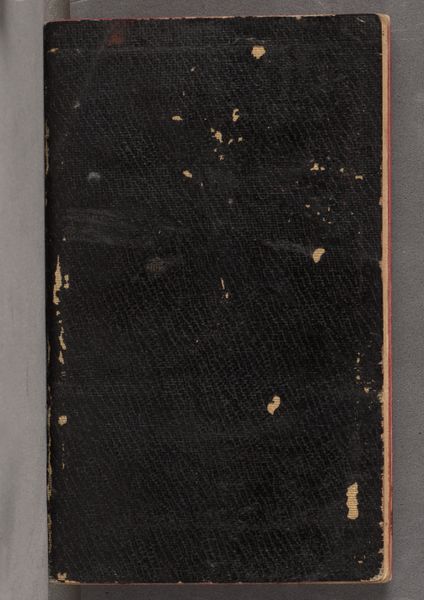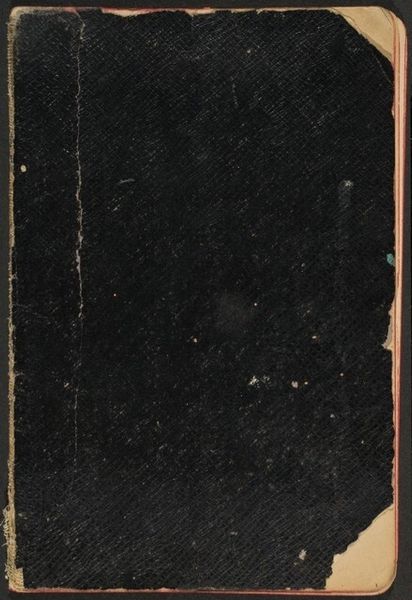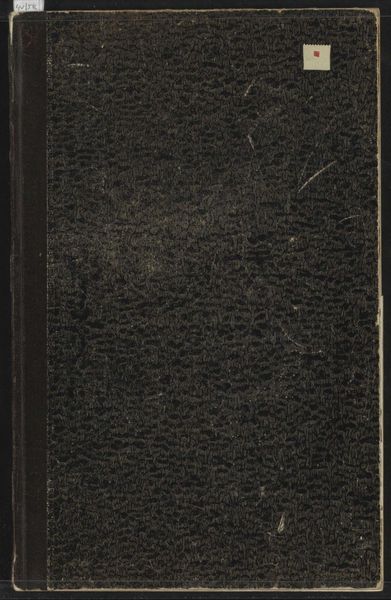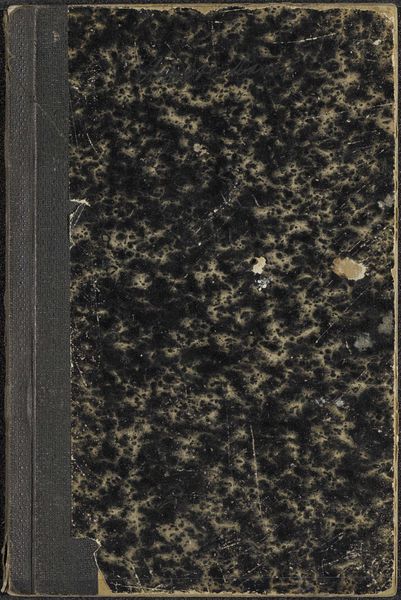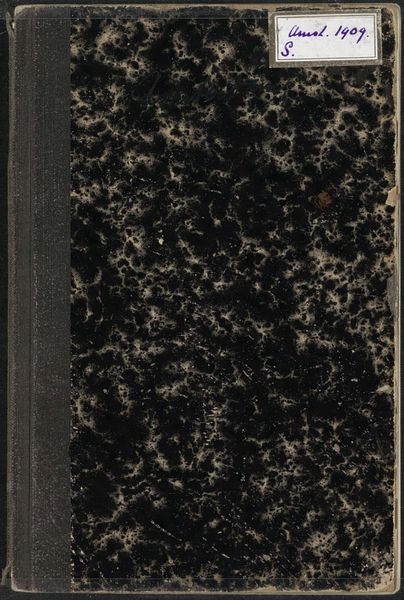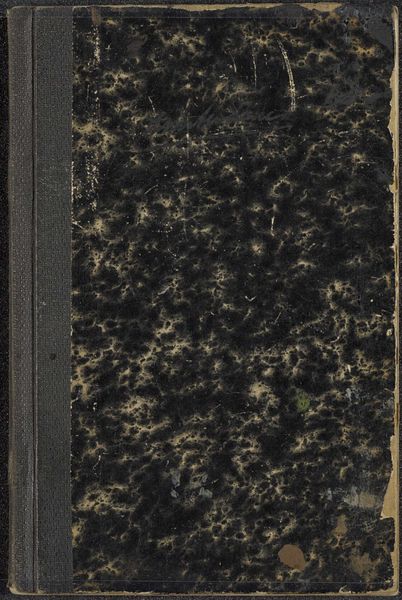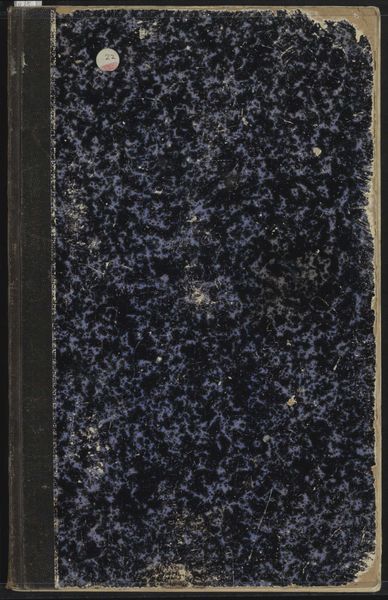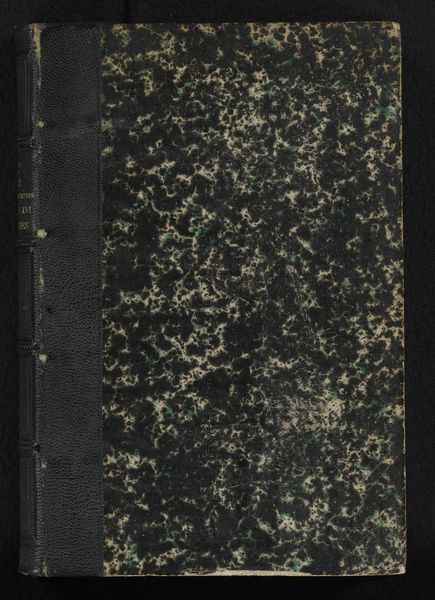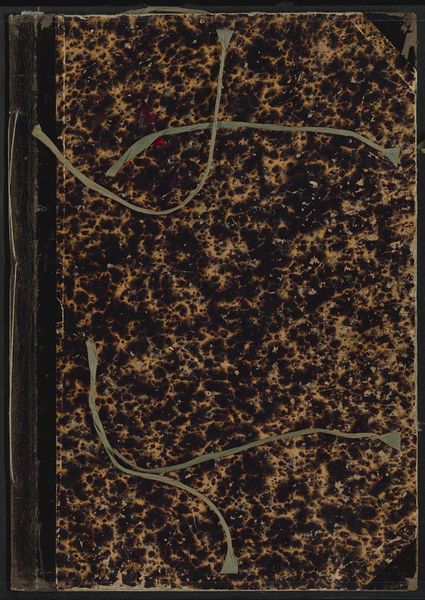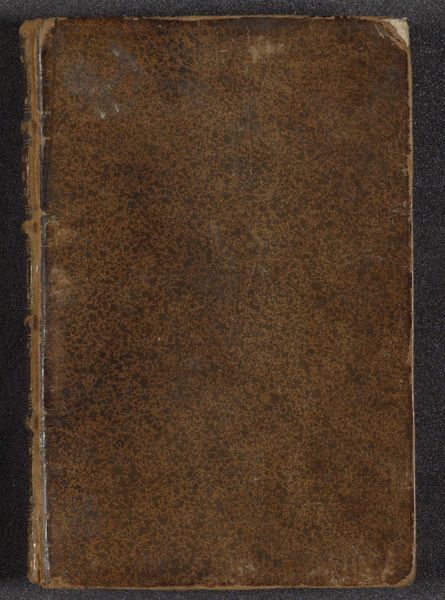
mixed-media, paper, photography
#
mixed-media
#
worn
#
disrepair
#
paper
#
photography
Dimensions: height 120 mm, width 72 mm, thickness 4 mm, width 143 mm
Copyright: Rijks Museum: Open Domain
Curator: Here we have George Hendrik Breitner’s “Sketchbook with 29 pages,” dating back to 1896 and currently held at the Rijksmuseum. Editor: My first thought is 'distressed'. The cover has this incredible patina, these blemishes. I immediately want to know about the stories etched into it by time and circumstance. Curator: Indeed. While the pages hold diverse sketches rendered through mixed media including photography, I want to think about the cover itself. Its structure is a formal encapsulation of late 19th century bookbinding aesthetics, typical of a personal compendium meant to hold visual data. Editor: For me, it raises so many questions about Breitner’s process. What sort of interactions or social conditions would leave such marks? Was it something he carried everywhere, documenting city life and people’s struggles, acting almost as a shield? Curator: Possibly. But the visual decay also presents a contrast. We see a carefully bound object gradually yielding to entropy. Note how the scuffs form this seemingly random pattern, a fascinating interplay between intended form and unintentional mark-making. Editor: Absolutely. But beyond aesthetics, this speaks to how art serves the gaze of an urban explorer immersed in representing a marginalized existence. The very damage it displays may bear the index of a specific historic context where people were in struggle, especially concerning the living condition of people in Amsterdam, where Breitner documented street life extensively. Curator: A fascinating connection, to relate social unrest with such apparent marks and scratches on what it's supposed to be a tool of careful rendering, in a sense almost an affront to classical artistic values. I’m increasingly drawn to this surface that shows material degradation, a beautiful thing in its own way. Editor: Me too, though I see the material deterioration not only as a fascinating feature, but rather, as evidence. Evidence of its circulation, of Breitner using it extensively. These are not just formal traits. These are meaningful scars that provide insights into the artist's life, concerns and historical moments. Curator: It shows how focusing on the materiality of even an artwork can shift one's perspective, inviting questions on temporality, the artist's technique, and the complex history an object may contain. Editor: I completely agree. Every mark and imperfection become crucial in examining the conditions of production and representation.
Comments
No comments
Be the first to comment and join the conversation on the ultimate creative platform.
